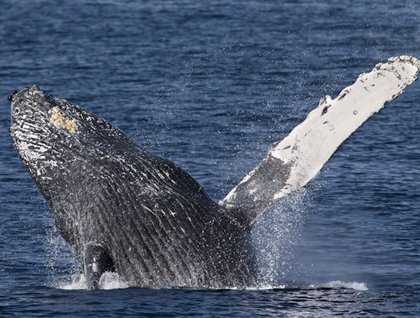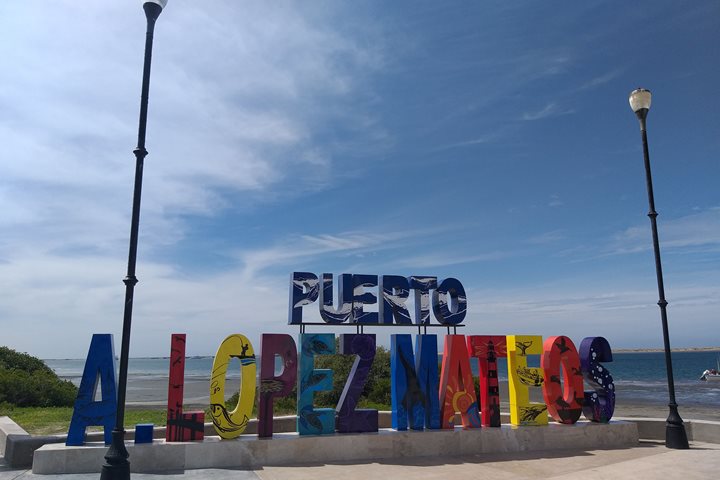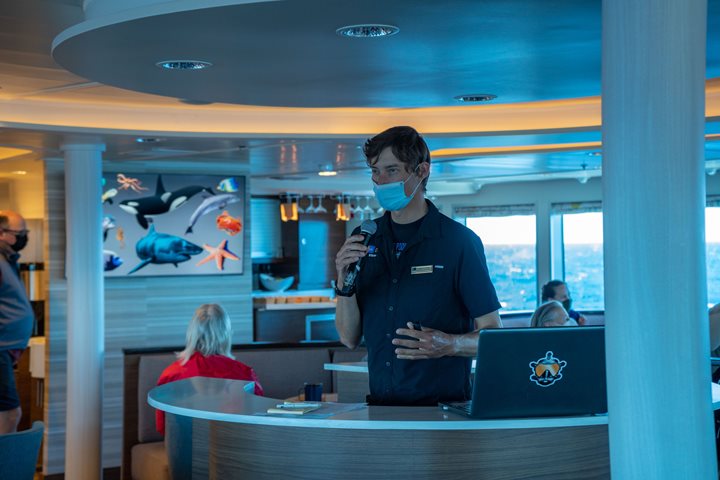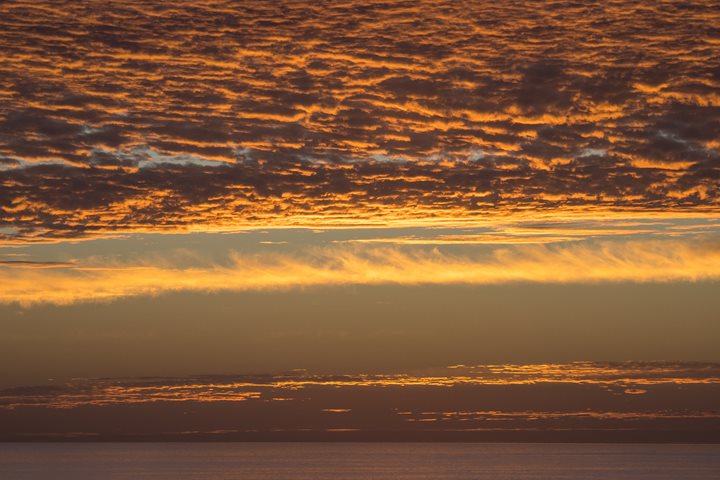After crossing the Tropic of Cancer during the night, we woke up this morning in the tropics; the National Geographic Sea Bird sailed around the southern portion of the Baja California Peninsula on her way to a well-known wintering area of humpback whales. Soon enough, the first blows were spotted and a great morning full of whale watching started.
We watched multiple groups of humpback whales doing all kind of interesting behaviors in perfect weather. So calm and glassy was the sea that we even saw a striped marlin sunning itself on the surface. But the whales had our full attention with their antics; groups of surface-active whales, most likely composed of several males competing to be the escort that eventually mates with the female, displayed a lot of energy. Some even breached several times, making everyone to stand on his or her toes in anticipation for the next one and hope for the perfect picture. One whale liked to come to the surface and raise its head high in a spectacular chin-slap. Another one entertained us for a long time by doing tail-slaps very close to the ship and we were able to hear the amazing sound it made. A sound similar to the one made by several other whales that we observed laying at the surface on their sides or backs and smashing their 15-foot-long pectoral flippers against the water. We saw so many whales and behaviors during the morning that we became well versed on the humpbacks’ routine at their winter grounds.
The southern tip of the peninsula is one of three areas in the Mexican Pacific where humpback whales gather during the winter; Banderas Bay, in the extreme southeast portion of the Gulf off Puerto Vallarta, and the Revillagigedo Islands archipelago being the other two. We know that the humpback whales that congregate in Mexican waters during the winter do so to mate and give birth to their young, not really to feed. They will reassume their feeding once they go back to their summer areas along the coast of Oregon, Washington, British Columbia, and the Aleutian Islands.
We eventually made our way to the fairly new Puerto Los Cabos Marina near San Jose del Cabo and went ashore for an evening of bird watching, shopping, and sightseeing. Founded as a Jesuit mission in the early 1700’s, San Jose is still a small sleepy town overshadowed by its more glamorous and cosmopolitan neighbor Cabo San Lucas. We visited a blown-glass factory, the mission and many art galleries, ice-cream and coffee shops, and got to know a little bit of the local life before heading back out at sea again. We arrived at Land’s End just in time to watch sunset at the world-famous granite arch the Friar Rocks that marks the western boundary of the Sea of Cortez. And as we sailed into the open Pacific, a wonderful day slowly came to an end.









